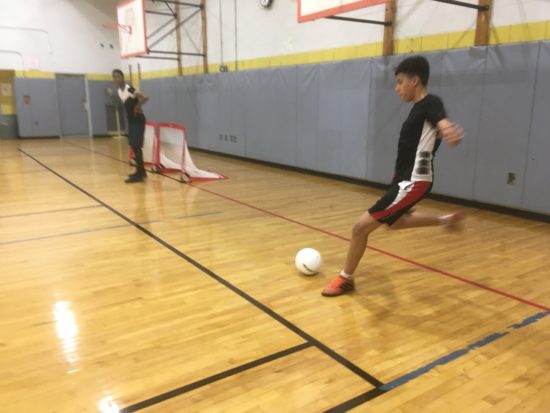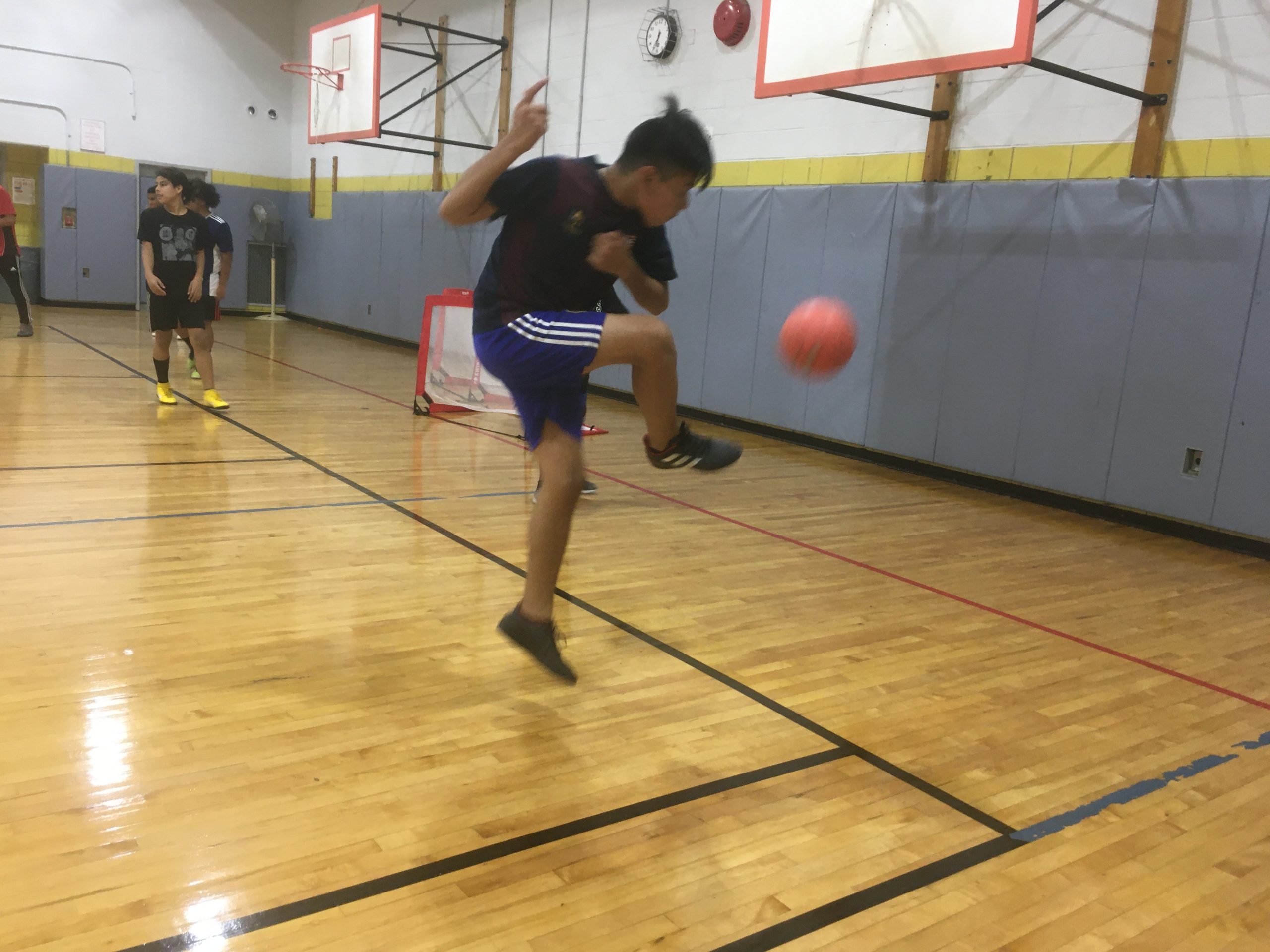
Coach Barry O’Driscoll stood midfield and laid down the rules.
“Five passes before you get to shoot a goal,” Driscoll said.
Then he blew his whistle and the field of phosphorescent pinnies collided.
Each Saturday, beneath a swarm of sweaty teens, the basement basketball court at Hostos-Lincoln Academy of Science transforms into a hard-court soccer pitch.
The school, located at 600 St. Ann’s Avenue, hosts Saturday Night Lights, an initiative by the Manhattan District Attorney’s office to keep kids off the streets, away from crime and engaged in physical activity.
This September, SNL expanded citywide, adding sites to neighborhoods with the highest concentrations of youth violence. Mott Haven gained a dance class at Jill Chaifetz Transfer School and soccer at Hostos-Lincoln.
So far, the Hostos-Lincoln subsidiary has not drawn its intended audience: the neighborhood students most likely to engage in crime.
The popular soccer program pulls a consistent 40 kids each week. Ten are 11-to-14-year-olds, 30 are 15-to-18-year-olds and the majority are already extracurricularly involved.
Hostos-Lincoln juniors Bryan Hernandez, Yehida Gendy and Bishop Oparaugo joined SNL on their school soccer coach’s recommendation. Hernandez said at the first Saturday practice he recognized 80 percent of the kids from his school team.
Saturday Night Lights operates on the premise that involved students are more likely to graduate high school and high school graduates are less likely to become disconnected youth. The demographic comprises 16-to-24-year-olds who are neither working nor in school and are at a higher risk of committing a crime.
Nationwide, disconnected youth constitute only 17.3 percent of their age group, but commit 63 percent of youth crime, a Justice Policy Institute study showed. The South Bronx has the highest percentage of disconnected youth citywide at 35.6 percent, a Measure of America study found.
Rebecca Gluskin, Ph.D., Measure of America’s Deputy Director, said that while youth disconnection isn’t linked to major felonies, studies show a moderate correlation between youth disconnection and misdemeanors.
Assistant Coach Fausto Perez graduated from Hostos-Lincoln a decade before SNL hit the school. He remembers soccer as a haven from street crime, but one that required heavy self-discipline.
“Soccer is what kept me out of trouble; it kept me tied in,” said Perez.
Perez said SNL’s structure makes it simpler for kids to make smart and, safe decisions about how they spend their time outside of school.
But for Hernandez, Gendy, and Oparaugo, SNL replaced Saturday nights spent mostly at home, playing video games, doing homework or avoiding chores.
“It was hard to convince my parents to let me come to the program. They’re overprotective,” said Oparaugo.
Whether SNL has reached its intended demographic, it seems to achieve the secondary goals of teamwork and community-building outlined by Bronx District Attorney Darcel Clark in a statement.
As Oparaugo discussed his SAT study schedule, the stands erupted. The orange pinnies had scored, but the play had been canceled. The shooter hadn’t made the required five passes; he hadn’t worked with his team.
“That’s what soccer is about. It’s about building brotherhood and looking after each other,” said Perez. “It’s our own little healthy gang.”

